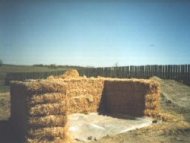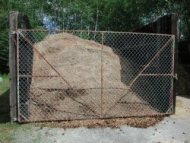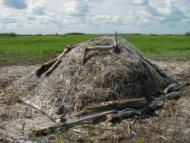Required Composting Equipment
Before composting you must consider what equipment is available to you on the farm. Below is a list of equipment and supplies that producers should have access to prior to composting.
Material Transfer
Composting requires a front-end or skid-steer loader to move carcasses as well as co-compost, cover the carcasses with co-compost, turn and mix the compost, and move the finished compost.
Temperature Monitoring
Temperature is a key indicator in determining the success of your compost pile since microbial activity is directly related to heat. Temperatures should be monitored daily with a temperature probe approximately 1 m (3 ft) in length. There are both manual and digital temperature probes available.
Record Keeping
It is critical to keep a record of your activities. This includes the weights of carcasses, type and amount of co-compost material, temperature measurements, weather conditions and any observations. This way, if something goes wrong with your composting pile you can look back to see when the error occurred and approach a solution.
Record keeping example (PDF 4.5 KG)
Securing the Pile
Manitoba Conservation and Climate requires that the composting pile be secure from scavengers. Below are some commonly used fences.

Straw bale walls

Chain link fence

Chicken wire
Other Supplies
It may be useful to have a shovel or pitchfork on hand to maintain your compost pile. It is also a good idea to have access to a water source. In areas where there is not much rain, water may need to be added to the compost pile.
